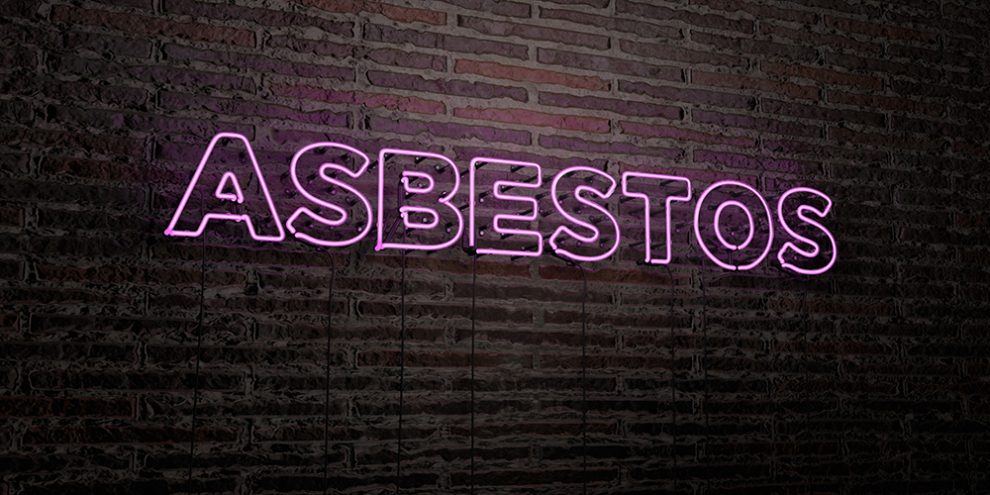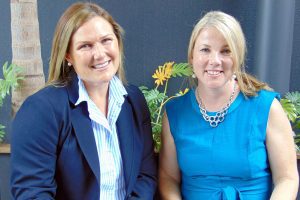To mark the launch of the National Asbestos Awareness Campaign (November) to raise vital awareness of the dangers of asbestos among Australian homeowners, renovators and tradies, the Asbestos Diseases Research Institute (ADRI) announced an international first in the campaign for a global ban on asbestos.
Asbestos and asbestos-related diseases are increasingly recognised as a preventable global health threat, and although asbestos was banned in Australia in December 2003, our asbestos legacy is having the unenviable statistic of continuing to record the world’s highest number of mesothelioma deaths per capita.
13 Australians die of asbestos-related diseases every Week – 12 from malignant mesothelioma and another 13 are diagnosed with this incurable cancer caused from inhaling asbestos fibres when asbestos-containing materials are disturbed.
In the first global collaboration by scientific leaders in world health for the special issue of the International Journal of Environmental Research and Public Health (IJERPH) aims to prevent asbestos-related diseases globally through an international ban of asbestos.
Entitled the “Global Panorama of National Experiences in Public Health Actions to Ban Asbestos” this special issue brings together prominent researchers from twelve countries and regions (including Australia and New Zealand) to investigate strategies that led to the successful banning of asbestos and how those strategies may be implemented to ban asbestos globally, specifically in developing countries.
Professor Ken Takahashi, Director of the ADRI and Professor of the Sydney Medical School at the University of Sydney is the lead editor of this world first special issue of the Journal.
“When asbestos-containing materials are disturbed and microscopic fibres are released and can be inhaled, this can cause deadly diseases to develop 20-50 years after exposure including cancers such as malignant mesothelioma. There is no cure and the average survival time following diagnosis is just 10-12 months.”
“Our research examines the societal transition required for countries to phase out asbestos, the development of engineering technologies to substitute asbestos, medico-social infrastructure to diagnose, treat and compensate people with asbestos-related diseases, and communication strategies to minimise exposure to existing asbestos through awareness-raising and advocacy,” Professor Takahashi said.
“While asbestos has been banned in many developed countries (61 worldwide), there are no articles in scientific literature, let alone a special issue of a scientific journal dedicated to examining, analysing and collating national experiences in public health actions that have led to asbestos bans in multiple countries.”
“In the fight against asbestos-related diseases, this special edition by world-leaders in the field; aims to help build capacity in developing countries (the majority continue to use asbestos) through providing valuable knowledge from lessons learned enabling them to acquire information and the technologies needed to initiate strategies to effectively ban asbestos mining and manufacturing in these countries.
“In addition to increasing awareness of the danger to the health of Australians caused when existing asbestos-containing materials are disturbed, a global asbestos ban can aid in preventing illegal imports of new asbestos-containing products from these countries,” he said.
Ms. Laurie Kazan-Allen, the multi-award winning advocate of the International Ban Asbestos Secretariat based in the UK has been writing and campaigning on asbestos issues for 25 years, with her work published in 12 languages, she is the first non-Australian to receive the prestigious Emeritus Professor Eric G. Saint Memorial Award (2012) and is regarded as an authoritative voice in the global campaign to ban asbestos.
“The asbestos special issue of the IJERPH is both timely and apposite. The daily struggle to protect human beings from the asbestos hazard continues with grassroots activists in developing countries facing a constant battle against asbestos lobbyists spreading fake news and false facts. Two million tonnes of asbestos fibre is sold every year; in China – the world’s biggest asbestos user – asbestos is used to manufacture millions of tonnes of construction material and other products, some of which find their way to Australia,” said Ms Kazan-Allen.
“Australia has taken a leading role in mobilizing global support to eliminate asbestos-related diseases through its actions at the United Nations and outreach work with medical professionals, trade unionists and grassroots campaigners. At home and abroad, every initiative to increase asbestos awareness is valuable. The eradication of asbestos from our national infrastructures must be our ultimate goal; until then, however, the struggle to educate, remediate and protect our citizens must continue,” she said
Katherine Heiler, Chair of the Asbestos Education Committee behind Australia’s national Asbestos Awareness Campaign said, “Although Australia is among 61 countries that have banned asbestos, we’ve seen the inadvertent import of asbestos-containing goods and materials including children’s crayons, parts in quad bikes (in brakes and gaskets), in building materials and in other products.
“We know that there is no known safe level of exposure to asbestos fibres and while these imported products do pose a health risk, today the greatest risk to the health of Australians from asbestos-containing materials is already here in our workplaces and in our homes.
“Asbestos-containing materials remain in 1 in 3 Australian homes built or renovated prior to 1987. If left undisturbed, sealed and in good condition asbestos is not considered a health risk. However, if disturbed during renovations or maintenance and fibres are released that can be inhaled they can cause asbestos-related diseases including malignant mesothelioma.
“With the number of Australians developing these diseases predicted to rise in coming years as a result of exposure to asbestos during home renovations, it’s vital that we increase awareness of the dangers of asbestos and educate communities on how to manage it safely.
“Homeowners, renovators and tradies must visit asbestosawareness.com.au to learn how to identify and manage asbestos-containing materials safely because if they ignore the warnings, they could be playing a risky game of ‘Renovation Roulette’ and putting their lives and the lives of others at risk, including children,” Ms Heiler said.
The National Asbestos Awareness Campaign is the initiative of the Asbestos Education Committee in partnership with the Asbestos Diseases Research Institute and the Heads of Asbestos Coordination Authorities. Asbestos Awareness Day is Friday 24 November.
What to learn more…..
Renovating? Go Slow! Asbestos – It’s a NO GO!
Visit asbestosawareness.com.au – To learn what you need to know!























Add Comment